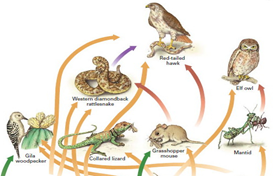

Context
The State of India’s Birds (SoIB) 2023, released recently finds that while a few bird species like the Indian peafowl are thriving in India, many are in decline.
About the Report:
- The report, based on 30 million observations contributed by 30,000 birdwatchers across the country, also highlights major threats – including pollution – to bird populations across the country.
- It lists 178 bird species in the country as being of “High Priority” for immediate conservation action.
- Developed by: There are about 13 institutions in India (six government institutions including the Wildlife Institute of India and seven conservation NGOs) and independent professionals came together to analyse data on bird distribution and population trends of 942 bird species in the country.
- The data is taken as updated on eBird, an online database of bird observations.
Who is the most threatened?
- While raptors, migratory shorebirds, and ducks have declined the most, birds living in habitats like open ecosystems, rivers, and coasts are among the worst affected.
- Key factors responsible for the decline: urbanisation, infrastructural development, environmental pollutants, loss of habitat, pesticide accumulation, targeted killing and climate change.
- Significance of Raptors:
- Raptors are at the top of the food web and are therefore highly vulnerable to changes in the environment such as declines in insects, mammals, small birds, fishes, and increases in contaminants and other environmental conditions.
- Changes in the health of raptor populations can indicate changes in the environment.
|
Who are Raptors?
|
Status of Bird in India:
- India is home to more than 1,350 bird species.
- Some are endemic: they’re restricted to specific areas such as biodiversity hotspots, and are found nowhere else in the world.
- Such as the White-bellied blue flycatcher, a small songbird that you can spot only in the Western Ghats of south India.
- Some are habitat specialists: they are found only in some habitats in the country.
|
Great Indian bustards, for instance, are ground-dwellers and are restricted to open habitats such as grasslands that are broadly known as open natural ecosystems or ONEs. |
- Climate change:
- The average global temperature has risen by over 1 degree Celsius since pre-industrial times, resulting in catastrophic consequences other living beings, like birds.
- It affects bird reproduction and survival through the disruption of species interactions by phenological mismatches.
- Urbanisation:
- Urbanisation results in loss of natural habitat for birds and it expose them to more air pollution and high temperatures.
- Lack of food supplies in urban areas leads to the homogenisation of bird communities as only behaviourally dominant species such as House Crows and feral Rock Pigeons are able to survive.
- Monocultures:
- In India, commercial monoculture plantations of rubber, coffee, and tea have been rapidly expanding in recent years.
- Such plantations are detrimental to the well-being of birds.
- Energy infrastructure:
- Countries have started to generate power using renewable resources instead of depending on conventional methods like coal-fired power plants.
- It has led to an increase of wind turbines in a country like India, where they have been installed in a wide range of landscapes including coastal areas, Western Ghats mountaintops, open arid lands, agricultural lands, and grasslands.
- The major impacts of wind turbines on birds include:
- Direct collision of birds with the rotating wind turbine blades
- Displacement (loss of habitat) of birds from the turbine area due to disturbance
- Barrier effects within habitats (obstacle to migration, or to other regular movements across feeding and roosting areas and breeding colonies)
|
The report mentioned the transmission lines have led to the death of many large-bodies species because of collision and numerous small-bodies species have been electrocuted. |
- Exposure to toxic chemicals during reproductive stages can affect fertility, egg formation, and eggshell thickness. Hence, can lead to impaired incubation and chick-rearing behaviours.
- All of this decreases hatching success and fledgling survival and increases the possibility of reproductive failure.
- Increasing avain diseases: The avian influenza outbreaks in 2020-2021 swept through many Indian States, causing mass mortality of wild birds.





